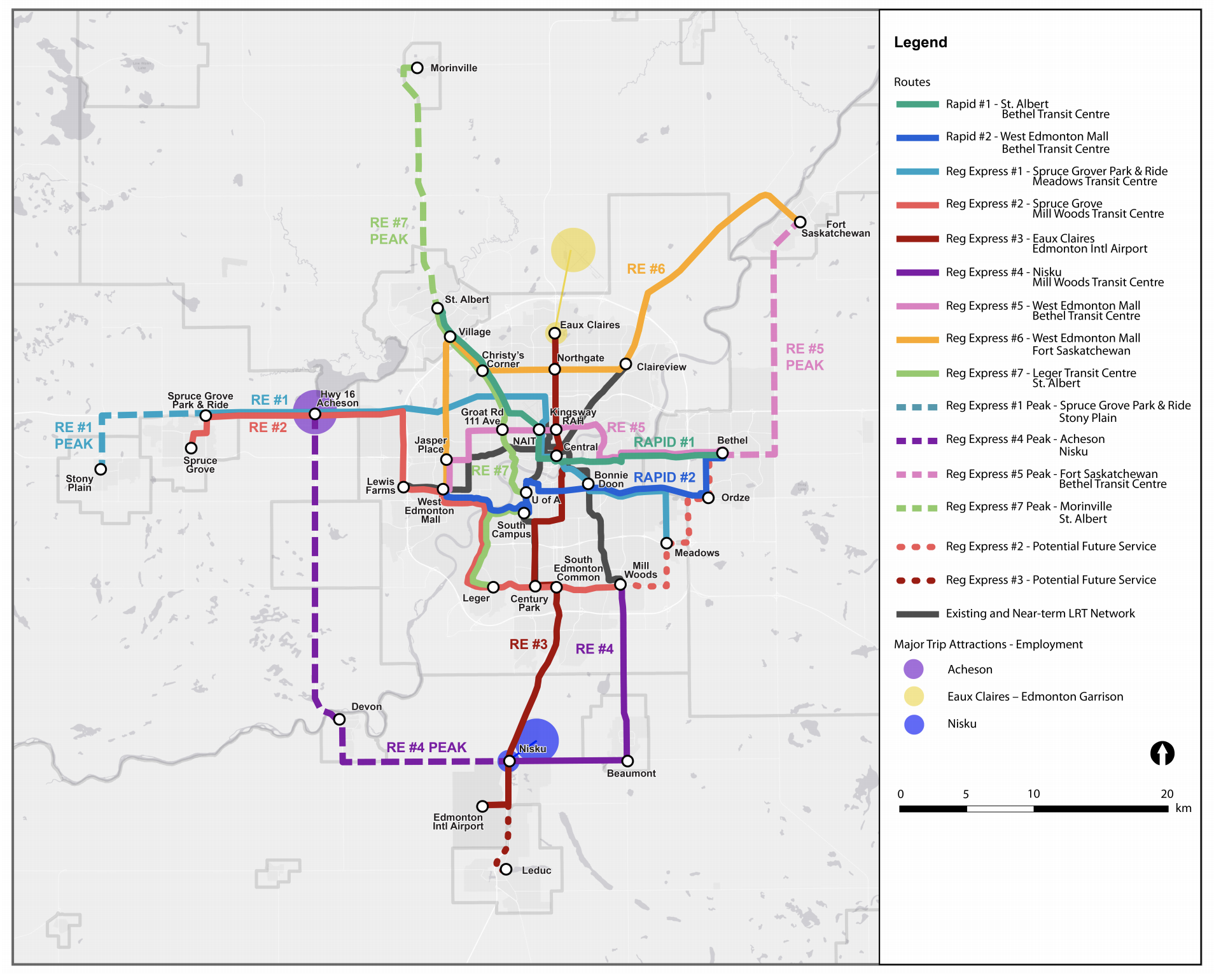Stronger Together: A Regional Transit System

UPDATE (March 11, 2020): All Edmonton-area municipalities have voted and all, expect for Strathcona County, are in favour of a regional transit commission. Approval from the provincial government is the only thing left before the Regional Transit Services Commission (RTSC) is officially formed. It is expected that the RTSC will begin operations as early as 2022.
Earlier this week City Council unanimously voted to endorse the creation of a Regional Transit Services Commission (RTSC) and in the process sent a strong message to our metro region: Edmonton is all in on regional partnership.
This new RTSC would drive the creation of a transit network that would see Edmonton’s buses and our LRT system link with the transit services of neighbouring municipalities including St. Albert, Spruce Grove, Leduc, and Stony Plain. We’re the second municipality to join the commission — St. Albert voted in favour of creating a commission and the remaining municipalities will vote by the end of March 2020.
Edmonton’s decision to join forces with our neighbouring municipalities and create a regional transit system makes business and logistical sense. While we share a jurisdictional border, it is generally understood that we all live in a “borderless” region. You may work in Edmonton, but live in St. Albert for example, or you live in Leduc but attend classes at UAlberta. Jobs are often in different municipalities than homes. Understanding this reality, having an integrated transit system makes practical and economic sense.
The business case for delivering transit on a regional scale is that Edmontonians will save money and service levels will improve. While there will be costs associated with setting up an RTSC, these costs will be offset by a long-term efficiency savings in the millions. A regional commission reduces the duplication of routes, and allows services to be coordinated by a single agency instead of individually-run systems.
Given how interconnected our two cities are, we were disappointed to see that Strathcona County voted against joining our commission. With the remaining municipalities in the Edmonton metro region set to vote before the end of March, we have the opportunity to see which of our neighbours have bought into a strong economic partnership around labour mobility and transit. Their upcoming votes will be a litmus test as to whether they are as committed as Edmontonians are to the overall economic and investable health of the region. Reduced congestion on our roads, tax savings, and an increase in efficient, seamless mobility that a regional transit network would provide will without a doubt make the region more competitive — proving we’re stronger together.
agree that LRT runs over the neighber counties, will be better for the environment. Just not sure, how many people will run the LRT for work, as lots of people prefer to drive for the freedom..